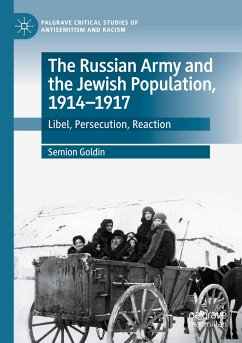This book represents a new reading of a key moment in the history of East European Jewry, namely the period preceding the collapse of the Russian Empire. Offering a novel analysis of relations between the Russian army and Jews during the First World War, it points to the army and military authorities as the 'gravediggers' of the Jews' fragile co-existence with the tsarist regime. It focuses on various aspects of the Russian army's brutal treatment of Jews living in or near the Eastern Front, where three quarters of European Jewry were living when the war began. At the same time, it shows the enormous harm this anti-Jewish campaign wreaked on the Russian empire's economy, finances, public security, and international status.
"Semion Goldin's work on the Russian Jewish community and the imperial army during WWI is a fascinating foray into the Russian Jewry's impossible conundrum between 'libel, persecution, and reaction' and into its traumatic, violent, chaotic, and complex encounter with the dark side of modernity. This work will surely remain the definitive treatment of the subject for some time to come." (Andrei Cusco, EuropeNow, europenowjournal.org, May 1, 2023)








